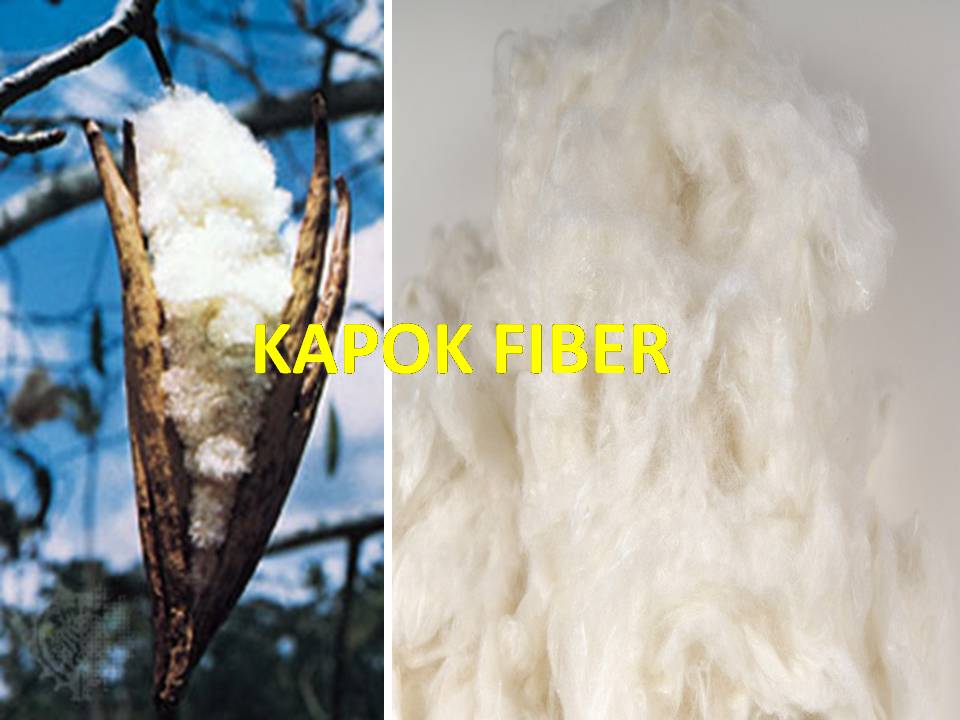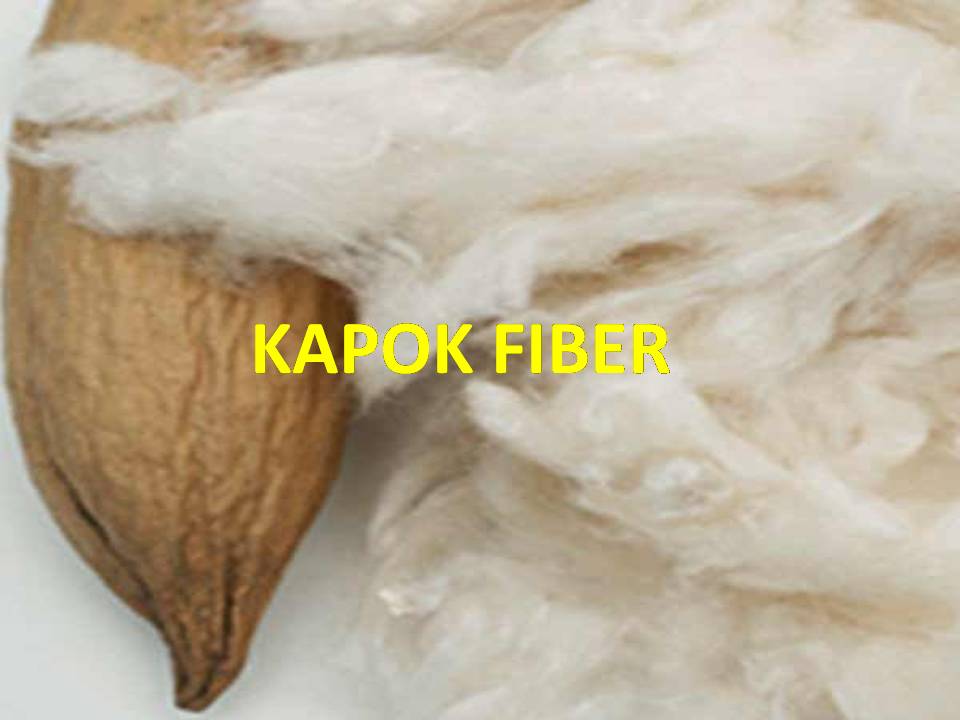KAPOK FIBER


Kapok is the most used common name for the tree and may also refer to the cotton-like fluff obtained from its seed pods. The tree is cultivated for the seed fibre, particularly in south-east Asia, and is also known as the Java cotton, Java kapok, silk-cotton or ceiba.
The word kapok refers both to the tree and to the fibre it produces, which is also known as silk cotton or Java cotton. The hair-like fibres that surround the kapok seeds are best used as a stuffing, where they have several advantages over more commonly used materials. Kapok fibres on their own are not suitable for spinning into yarn, as they are too smooth, slippery and brittle. Kapok is similar to cotton in that both fibres are found around the plant seeds, rather than extracted from the stem or leaves.
Kapok fibres are lustrous, yellowish brown and made of a mix of lignin and cellulose. Each fibre is about 2.5 cm long, has a wide lumen (central cavity) and thin walls covered with waterproof wax.
KAPOK FIBER OF CHARACTERISTIC :
- Light weight : the hollow core makes kapok very light, 8 times lighter than cotton by volume.
- Buoyant : the waxy coating helps repel water, and air bubbles are usually trapped in lumen, making kapok 5 times more buoyant than cork. Kapok can support as much as 30 times its weight in water. In the past, kapok was used to fill life jackets.
- Bounciness : kapok resists clumping (i.e. it does not become lumpy) it also bounces back to the original shape after washing, a useful property when stuffing soft toys. It is traditionally used for stuffing teddy bears, giving them quite a different feel to modern polyester stuffing.
- Packs down firmly : this characteristic makes kapok useful to stuff meditation cushions.
- Slippery : the waxy coating also makes kapok slippery, it therefore easily adjusts to shape, for example of the head on a pillow.
- Hypoallergenic
- Warm : the cell structure allows it to trap air making kapok a good fibre to use for insulation.
KAPOK FIBER USAGE :
Kapok finds use in bedding and upholstery industries, in the production of life-saving equipment, and in the construction of thermally insulated and soundproof covers and walls. On account of its buoyancy, freedom from water-logging and weight-bearing capacity, it is the material par excellence for the manufacture of lifebuoys and belts, waistcoats and other naval life-saving appliances. The buoyancy of kapok is about five times as great as that of cork and about three times that of reindeer hair. During the war, kapok was employed for insulating tanks, for lining aviation suits, for filling floats of army assault-bridges, and generally for replacing cork wherever lightness, moisture-resistance and floating power were needed.
The kapok fiber once used in floatation vests and has been used as building insulation has a hollow fiber and looks like glass fiber under the microscope. The hollow fiber has air inside allowing combustion deep inside the material. Smoldering fire and open flame travel quickly within the material.
- Kapok was considered unsuitable for textile purposes, because the fibre is brittle, smooth and slippery.
- Refined kapok seed oil is used for the same purposes as refined cottonseed oil. The wood is light and soft and is suitable for making canoes and toys. It is used for matches. The root bark yields a fibre.
BENEFIT OF KAPOK FIBER :
Many benefits usage of kapok fiber are the kapok tree as asthma medications, the kapok tree can treat diarrhea and wound healing, the kapok tree and the benefits of antioxidants, timber cotton tree as a commodity, organic kapok pillow can be a luxury, kapok non-toxic and free of chemicals, kapok hypoallergenic, kapok makes sleep better, organic Kapok is the health roles, kapok durable and washable, kapok environmentally friendly, the kapok fiber is a very commercial, the following kapok products can be used as fodder, seeds kapok usefull, it can be more enjoying and comfortable life, the market for kapok fiber or kapok fibre used as stuffing has declined considerably over the last 30 years, as it is replaced by polyester stuffing and foam plastics. There is, however, renewed interest in kapok fiber especially for textile applications or textile industries.
SPECIFICATIONS :
Moisture : Max 8% , Packing : 25 kg – 100 kg /bale , Color : Natural White yellowish , Certificate : Fumigation , Phytosanitary , Origin country , Capacity : 200 MT – 250 MT/ monthly , Shipping : FOB or CIF , Origin : Indonesia.

